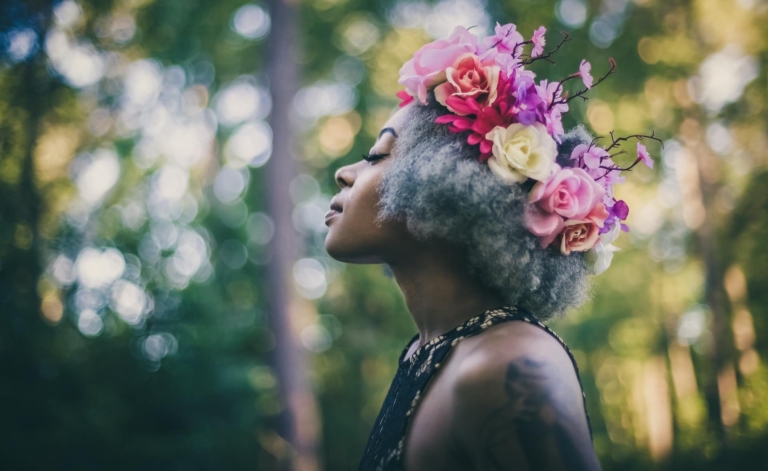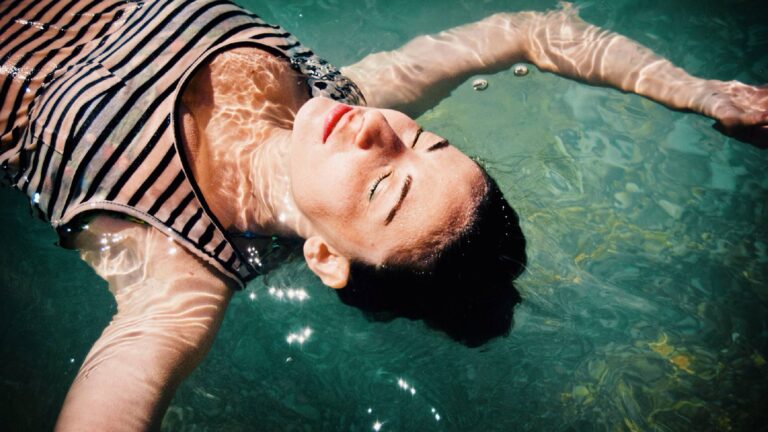Dry hair vs. damaged hair
Dry hair care and damaged hair care are not identical terms. This means that dry hair and damaged hair form a distinct group in their classification. In practice, however, these terms are often confused, because it’s important to remember that while all damaged hair is dry, not all dry hair is damaged.
The difference lies, among other things, the cause of hair type. To properly diagnose this problem, you first need to examine the nature of your hair and your current hair care routine. Dry hair and damaged hair are two different types of hair and therefore require an individual approach to hair care.

Dry hair
The main factors that negatively influence the condition of hair, i.e. leading to its deterioration, are certainly chemical treatments (bleaching, darkening, perming), hair treatments (straightening, curling, frequent use of curling irons or hair dryers), under-prescribed hair care products (shampoos containing powerful detergents, conditioners, masks), rubbing hair with a towel when towel-drying, or not combing hair gently.
Hair can also be dry by nature. This occurs when the skin does not produce enough sebum, or when it is not sufficiently distributed in the hair. Dry hair is more vulnerable to damage than normal or oily hair. It quickly loses its moisture, becomes brittle and fragile, and often splits. In addition, dry hair tangles easily and is difficult to style, lacking shine and elasticity. Dry hair is also prone to frizz. Unlike normal or oily hair, dry hair looks better immediately after washing.
Use a shampoo, conditioner and mask afterwards.
It’s also important to use a shampoo and mask after conditioning, as dry hair needs constant moisturizing every day. These are complementary products that should never be missing from our bathroom. Ideally, they should be of good quality, contain natural ingredients and have a light texture so as not to be an unnecessary burden.
After washing, you can also apply your favorite oil to the ends, for example, virgin coconut oil, which thanks to its unique properties has the ability to penetrate the hair structure, increasing hydration of the ends and preventing them from splitting. Other moisturizing ingredients include oatmeal, shea butter, keratin, argan, sweet almond and avocado oils.
When it comes to masks for dry hair, it’s worth choosing one that strengthens roots and follicles and follicles, moisturizes and smoothes hair, the mask should be rich in moisturizing and nourishing ingredients. The use of well-chosen masks makes hair strong, shiny and resistant. Applying a mask after washing makes hair easier to style, ensuring soft, light, shiny strands. Using the mask as a compress before washing definitely improves hair hydration and elasticity.

Damaged hair
Frequent, intensive hair care or overly frequent hair washing and the use of cosmetics containing powerful detergents deprive hair of its natural protective barrier. The heat generated by hair dryers, curling irons and straighteners also contributes to weakening the hair. It’s also important to remember that shampoo, along with all impurities, removes hair’s natural protective layer against potential damage.
It is therefore advisable to use conditioner frequently, even as a cleanser. Leave-in conditioner is the most effective. Unfortunately, this method is not suitable for everyone. If you use shampoo, make sure it’s gentle on your hair and scalp.
The best oils are those that penetrate deep into the skin
For damaged hair, oiling can also be a good option. The best oils for this are those that penetrate deep into the hair, such as virgin coconut, grapeseed and sweet almond oils. Oils can be applied a few hours before shampooing and a little afterwards on the ends.
To care for this type of hair, it’s a good idea to choose cosmetics designed specifically for damaged, brittle, bleached, dry, curly and dull hair, with the aim of nourishing, smoothing, moisturizing and shining. A well-chosen mask should have nourishing and protective properties against adverse climatic conditions – humidity, high and low temperatures – and contain ingredients that make hair soft, silky and shiny.
Moisturized, elastic, shiny hair
Masks must be formulated so that the active ingredients penetrate the hair and fill in the loss of natural intercellular cement, i.e. strengthen the fibers and close open cuticles. This regenerates hair structure, leaving it hydrated, elastic and shiny.
Masks can contain, among other things, keratin, which penetrates the hair surface, fills in micro-damage in damaged, dry hair, and prevents breakage and split ends. Hair regains its softness and healthy shine. The mask should be applied no more than three times a week for 15 to 30 minutes, and it is recommended to heat it with a hair dryer, as the higher temperature helps the nutrients to penetrate the hair more quickly.
Although dry hair and damaged hair have different causes, they also have a lot in common. Dry hair and damaged hair have a lot in common. Both require special care and attention, but both will thank you for their health and beauty.
“One of my biggest dreams is that my company will be able to change the course of one family’s life, one child at a time by giving back to the community.”







